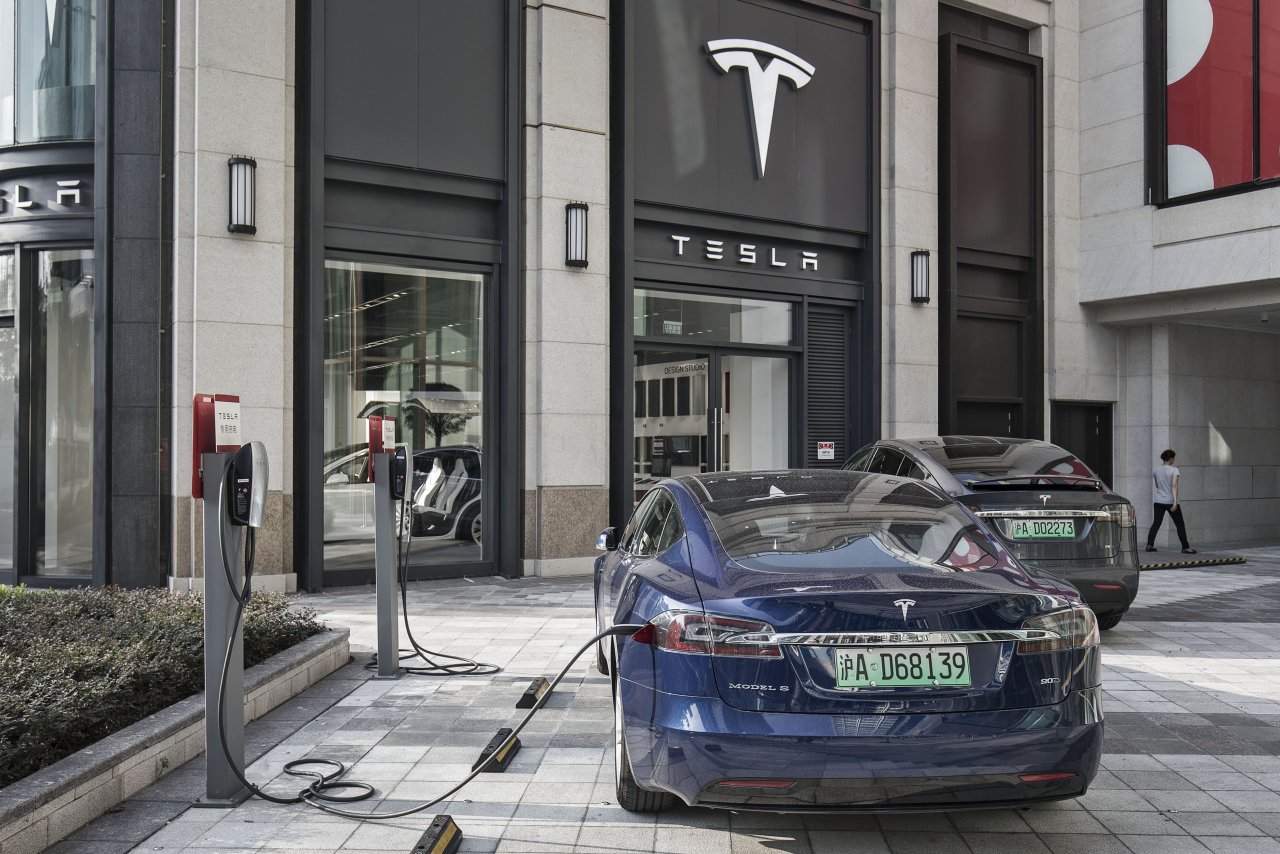More than a week has passed since the US and China fired the opening shots in what is turning out to be an escalating trade war that has yet to produce any visible winners in either of the world's two biggest markets.
When President Donald Trump's White House initiated 25% tariffs on $34 billion worth of Chinese goods on July 6, China immediately retaliated with a 25% duty on $34 billion of US imports, Nikkei reported.
Among the items targeted by Beijing are Tesla Motor's electric autos, which are prized items on the mainland. Two days after the tariffs were implemented, a crowd of customers worried about larger sticker prices stormed a Tesla dealership in central Shanghai.
"Once the present inventory is depleted, we will immediately raise the price," said a sales manager. The popular Model S is due to sell by the end of this month, at which point the price will go up about 140,000 yuan ($20,900). "If you don't reserve one now, you will lose out," said the dealer.
Because CEO Elon Musk has yet to build his planned assembly plant in Shanghai, all Tesla vehicles are American imports. Last year, the automaker sold about 15,000 units in China, but the tariffs will likely dent that performance. One person at the Shanghai dealership was worried that the business will hardly sell any vehicles imported past July 6.
On top of that, the trade war will be asymmetrical. While the US imported roughly $500 billion worth of Chinese goods in 2017, China only took in about $130 billion. Even one round of tit-for-tat tariffs will paralyze exports in both sides. The first casualty of that phenomenon is the interruption of US exports to China.
Hurting American Businesses
Tom Adams, founder and CEO of Maine Coast, a lobster distributor in the US East Coast state, will never forget the moment when China authorized tariffs on the seafood on June 16. "I was at home, and it was a blow in the first day," he said
Thanks to China's burgeoning middle class, Maine Coast enjoyed Chinese demand that rose between 20% and 30% annually. The company had just finished a $1.5 million plant expansion when the good times came to an abrupt halt.
"July 1 was when (Chinese) customers started holding off buying from us. Completely ceased," said Adams. The company has set lofty sales projections and "a big part of that growth expectation is China," he added.
Another victim of the trade war is the American soybean farmer. China imported roughly 96 million tons of soybeans last year, making it the largest importer of the commodity. China only produces about 15 million tons of soybeans domestically, illustrating its dependence on imports.
Now the tariffs have taken the bottom out of US soybean prices, delivering a gut punch to farmers like Tim Bardole. He was already $100,000 in the red last year due to a year’s long slump in cereal prices, and the current predicament has driven him into a corner.
"I'm not sure if I can get a loan from the bank to finance our next year's crop," said Bardole.
Difficult Time in China
In China, there are signs that the country is having a difficult time filling the hole left by the US. The local government serving the northeast city of Changchun issued a notice in late April announcing lavish subsidies for farmers who grow more soybeans.
But a visit to a village outside of Changchun last month revealed sprawling fields of corn and hardly any soybean to be seen. "We already planted corn when the notice came, so there was no time" to switch to soybeans, said a farmer. The price hikes will hurt ordinary citizens.
The trade war has grim implications for Chinese employees as well, since the country sits in the middle of the global supply chain. Components and intermediates from Japan, South Korea and elsewhere are pieced together at the "world's factory", which ships out end products to America.
After being slapped with a US import ban in April, ZTE was left unable to produce smartphones and telecommunications equipment, which nearly drove it out of business. Other manufacturers on both sides of the Pacific are bracing for similar cutoffs to the supply chain.
Of course, US consumers will not be immune. The White House announced Tuesday it is preparing a 10% levy on $200 billion worth of additional Chinese goods, which could go into force in September. Included on the blacklist are daily consumables, and a jump in prices could depress US consumption.


